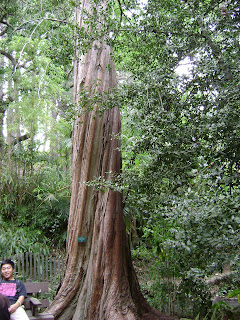Scientific name: Aesculus californica
Date collected: 4/18/2011
Location collected: UCLA Mildred E. Mathias Botanical Gardens
Habitat: The California Buckeye was located on a slightly sloped hill and was not near any other plants.
Nativity: The California buckeye is native to California and can be found on moist canyon bottoms to dry slopes and hilltops.
Nativity: The California buckeye is native to California and can be found on moist canyon bottoms to dry slopes and hilltops.
Special notes: The California buckeye produces not only pear-shaped fruit but white and/or pink flowers that form in long clusters.
Resources:








































